Economic stagnation feels just like recession to the South African consumer
by Francois van der Merwe,
2016-02-09 05:56:41.0
ON February 2, the World Bank followed the International Monetary Fund (IMF) in slashing its economic growth forecasts for SA. It projected growth of 0.8% for this year, in line with the IMF’s forecast of 0.7%. But next year’s growth estimate of 1.1% was substantially lower than the IMF’s expectation of 1.8%.
The World Bank also noted that the South African economy was "flirting with stagnation if not recession".
Economic growth of less than 1% is bound to feel like recession for the South African consumer, who is facing high debt levels, rising interest rates and higher inflation.
Low-income households have seen an increase in their debt levels over the last few years, and in contrast to higher income households, which have increased their mortgage debt levels, the rise in debt was due to unsecured lending. Rising interest rates and inflation will affect this part of the population, which constitutes the largest group in the country.
The market is pricing in interest rate hikes of at least 100 basis points over the next 12 months. Retrenchments in the mining sector will continue to weigh on lower-income households, as well. Although next year’s growth is expected to improve, it is coming off a very low base.
According to the government’s National Development Plan, economic growth needed to be sustainably in excess of 5% to reduce unemployment to acceptable levels. This type of growth in gross domestic product was forecast to reduce current unemployment from more than 25% to 14% in 2020 and 6% in 2030. But from the onset we are way off the target. The current economic environment will see the unemployment rate remain unchanged or even increase further.
According to the leading economic indicator, there is no catalyst to unlock stronger levels of growth in the near future, and the government has fallen short of announcing any structural measures to turn economic growth around.
The newly reappointed Finance Minister, Pravin Gordhan, was left with little fiscal flexibility and he will struggle to provide support for the economy in the budget later this month, due to pressure on revenues and credit rating agencies that are closely monitoring debt levels and the direction of future policy, including fiscal consolidation.
All the drivers of economic growth — the government, the consumer, business and trade unions — are under pressure.
However, in an emerging-market context, SA is not the most rotten apple in the basket. In fact, local woes are overshadowed by those experienced by Brazil and Russia. Both have fallen prey to the commodity fallout as well as internally orchestrated issues. The World Bank projected gross domestic product contractions of 0.7% for Russia and 2.5% for Brazil this year. The IMF’s forecasts for these two countries were worse, indicating even deeper recessions.
The government will have to implement more concerted efforts to direct the economy in the right direction and prevent it from falling into the same category as Brazil and Russia. The country’s investment-grade rating remains an uncertainty and expectations are that Standard & Poor’s will cut it to junk status as soon as June this year.
If one compares SA’s looming credit rating downgrade to that experienced by Portugal and its subsequent exclusion from the Citigroup World Investment Grade Bond Index, SA can expect foreign fixed-interest capital outflows already six to 12 months ahead of the event in anticipation of the downgrade, and irrespective of the yield it offers.
• Van der Merwe is head of offshore investments at Novare
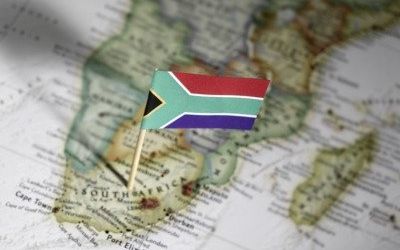
Picture: SUPPLIED
ON February 2, the World Bank followed the International Monetary Fund (IMF) in slashing its economic growth forecasts for SA. It projected growth of 0.8% for this year, in line with the IMF’s forecast of 0.7%. But next year’s growth estimate of 1.1% was substantially lower than the IMF’s expectation of 1.8%.
The World Bank also noted that the South African economy was "flirting with stagnation if not recession".
Economic growth of less than 1% is bound to feel like recession for the South African consumer, who is facing high debt levels, rising interest rates and higher inflation.
Low-income households have seen an increase in their debt levels over the last few years, and in contrast to higher income households, which have increased their mortgage debt levels, the rise in debt was due to unsecured lending. Rising interest rates and inflation will affect this part of the population, which constitutes the largest group in the country.
The market is pricing in interest rate hikes of at least 100 basis points over the next 12 months. Retrenchments in the mining sector will continue to weigh on lower-income households, as well. Although next year’s growth is expected to improve, it is coming off a very low base.
According to the government’s National Development Plan, economic growth needed to be sustainably in excess of 5% to reduce unemployment to acceptable levels. This type of growth in gross domestic product was forecast to reduce current unemployment from more than 25% to 14% in 2020 and 6% in 2030. But from the onset we are way off the target. The current economic environment will see the unemployment rate remain unchanged or even increase further.
According to the leading economic indicator, there is no catalyst to unlock stronger levels of growth in the near future, and the government has fallen short of announcing any structural measures to turn economic growth around.
The newly reappointed Finance Minister, Pravin Gordhan, was left with little fiscal flexibility and he will struggle to provide support for the economy in the budget later this month, due to pressure on revenues and credit rating agencies that are closely monitoring debt levels and the direction of future policy, including fiscal consolidation.
All the drivers of economic growth — the government, the consumer, business and trade unions — are under pressure.
However, in an emerging-market context, SA is not the most rotten apple in the basket. In fact, local woes are overshadowed by those experienced by Brazil and Russia. Both have fallen prey to the commodity fallout as well as internally orchestrated issues. The World Bank projected gross domestic product contractions of 0.7% for Russia and 2.5% for Brazil this year. The IMF’s forecasts for these two countries were worse, indicating even deeper recessions.
The government will have to implement more concerted efforts to direct the economy in the right direction and prevent it from falling into the same category as Brazil and Russia. The country’s investment-grade rating remains an uncertainty and expectations are that Standard & Poor’s will cut it to junk status as soon as June this year.
If one compares SA’s looming credit rating downgrade to that experienced by Portugal and its subsequent exclusion from the Citigroup World Investment Grade Bond Index, SA can expect foreign fixed-interest capital outflows already six to 12 months ahead of the event in anticipation of the downgrade, and irrespective of the yield it offers.
• Van der Merwe is head of offshore investments at Novare


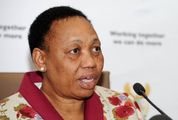
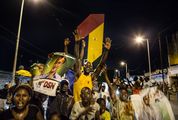




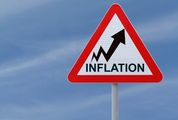

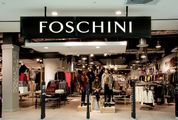













Change: -0.47%
Change: -0.57%
Change: -1.76%
Change: -0.34%
Change: 0.02%
Data supplied by Profile Data
Change: -1.49%
Change: 0.08%
Change: -0.47%
Change: 0.00%
Change: -0.04%
Data supplied by Profile Data
Change: -0.34%
Change: 0.03%
Change: -0.10%
Change: -0.22%
Change: -0.81%
Data supplied by Profile Data
Change: -0.28%
Change: -1.15%
Change: -0.07%
Change: -1.21%
Change: -0.22%
Data supplied by Profile Data